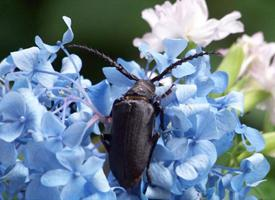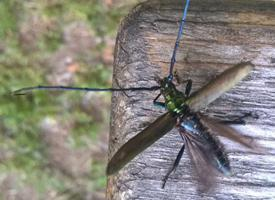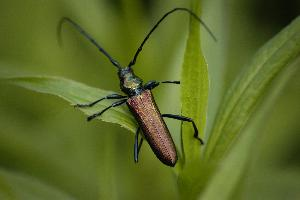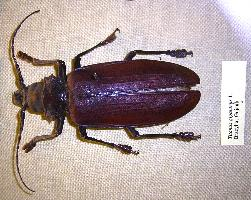
Váhy a míry
| Délka | od 18 do 45 mm |
|---|
Popis zvířete
The Tanner, scientifically known as Prionus coriarius, is a captivating species of longhorn beetle that belongs to the Cerambycidae family. This beetle is notable for its considerable size and distinct physical characteristics, which make it an intriguing subject of study for entomologists and a fascinating encounter for nature enthusiasts.Adult Tanner beetles can reach impressive lengths, typically ranging from 18 to 50 millimeters, with males generally being larger than females. Their robust bodies are covered in a dark, reddish-brown exoskeleton, which provides them with a degree of camouflage against the bark of trees, their natural habitat. One of the most striking features of Prionus coriarius is its long, curved antennae, which can be as long as or longer than the beetle's body itself, especially in males. These antennae are not just for show; they play a critical role in sensing the environment and locating potential mates.
The life cycle of the Tanner is as fascinating as its appearance. Females lay their eggs in the soil near suitable host trees, such as oak, chestnut, and willow. Upon hatching, the larvae, known as grubs, burrow into the ground and begin their journey towards the roots of these trees, where they feed on the sapwood and heartwood. This feeding behavior can cause significant damage to living trees, leading to weakened structures and, in severe cases, the death of the tree. The larval stage is remarkably long, lasting up to three years, during which the grubs grow and molt several times.
As the larvae mature and complete their development, they pupate within the wood or soil, emerging as adult beetles during the warmer months, typically from late June through August. The adult phase of their life cycle is relatively short-lived, lasting only a few weeks, during which their primary focus is on reproduction to ensure the continuation of the species.
Despite their imposing size and potential as pests, Tanner beetles play an essential role in their ecosystems. By breaking down decaying wood, they contribute to nutrient cycling and the overall health of forest environments. However, their preference for living trees can sometimes put them at odds with forestry practices, making their management a topic of interest in forest conservation efforts.
In summary, the Tanner (Prionus coriarius) is a remarkable beetle, both in its physical attributes and its ecological role. Its life cycle, from the wood-boring larvae to the majestic adults, showcases the complexity and beauty of nature's designs. While they may pose challenges in forest management, they also embody the intricate balance between organisms and their environments, reminding us of the importance of biodiversity and conservation.
Podobná zvířata
Nové fotografie zvířat
Top 10 zvířat
- Chinese water dragon (Physignathus cocincinus)
- Galápagos tortoise (Geochelone nigra complex)
- Dolphin gull (Leucophaeus scoresbii)
- Japanese macaque (Macaca fuscata)
- Colombian red howler (Alouatta seniculus)
- Sea urchins (Echinoidea)
- Moustached guenon (Cercopithecus cephus)
- Diana monkey (Cercopithecus diana)
- Common reed warbler (Acrocephalus scirpaceus)
- Common house mosquito (Culex pipiens)


